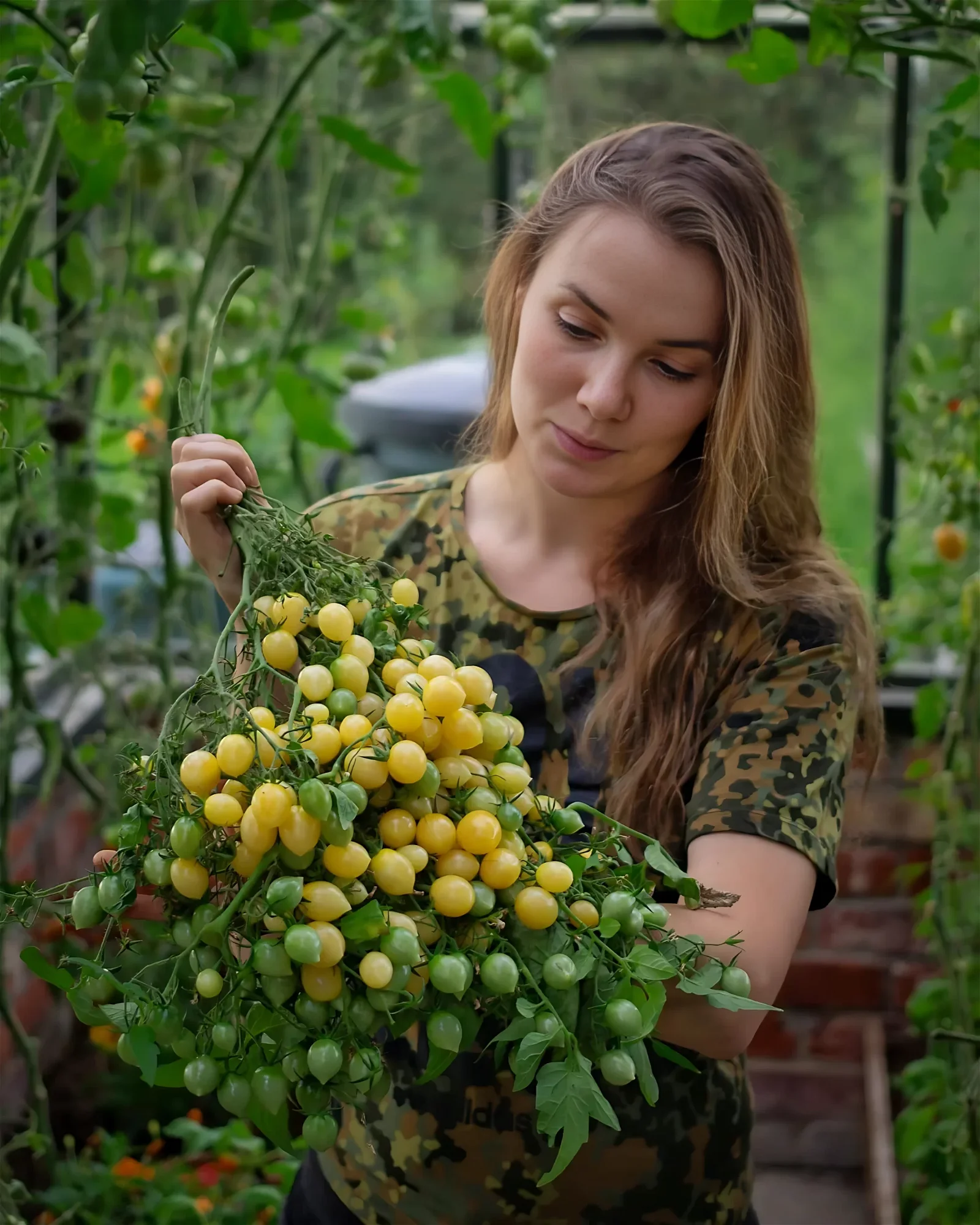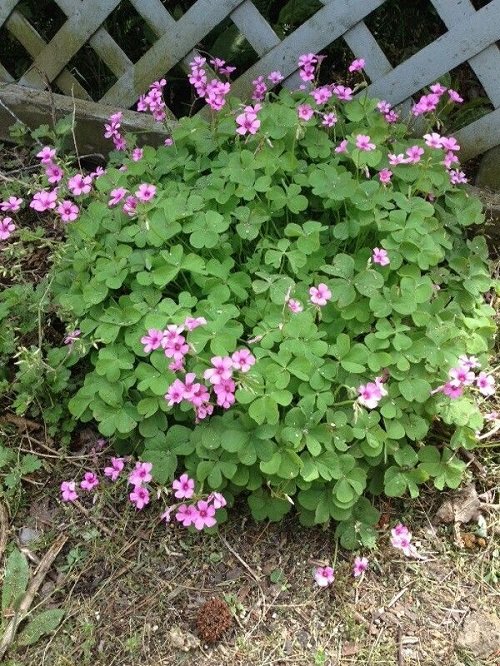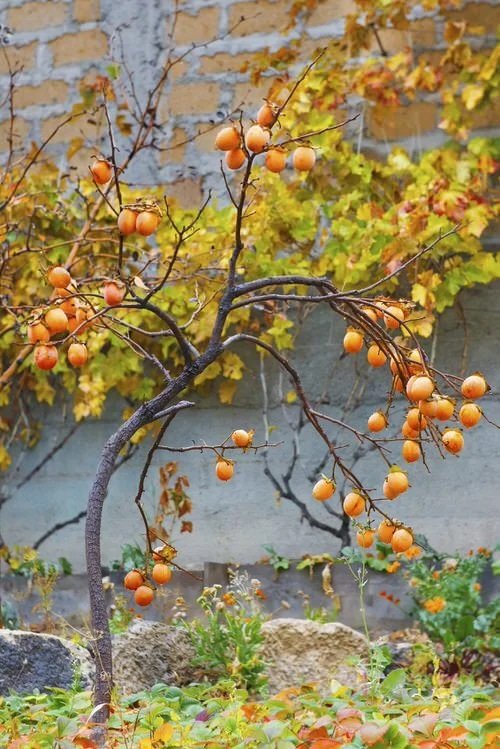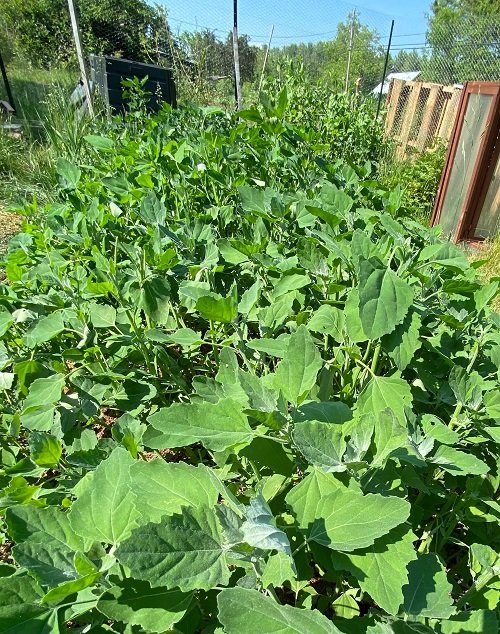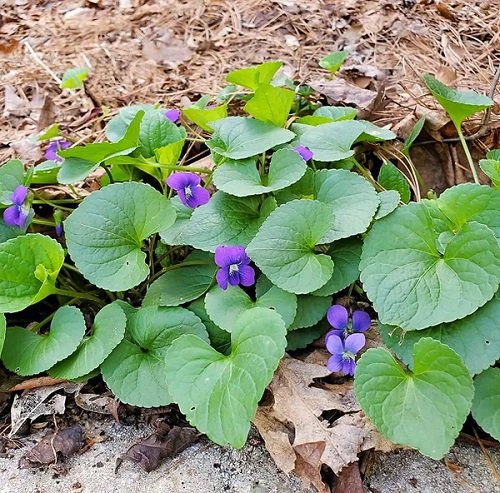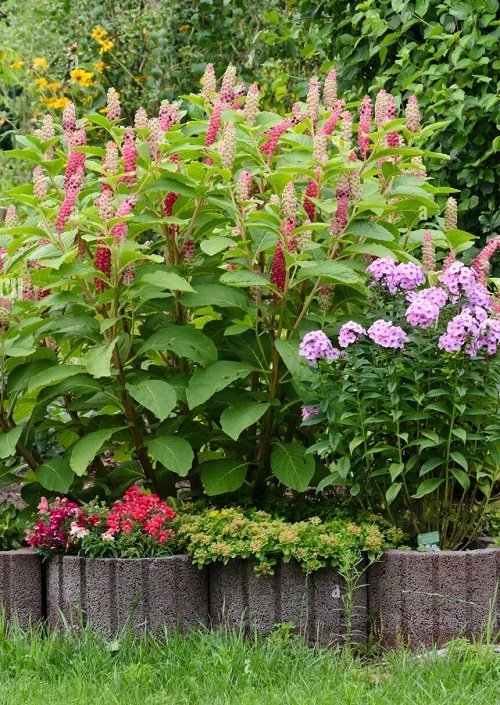This list of Wild Edible Plants in Georgia will provide you with a detailed insight into the specimens that you can grow in the garden!
Georgia, with its varied ecological landscapes, is an ideal place for wild plant enthusiasts. The state, from the mountains to the coast, primarily spans USDA Hardiness Zones 6b to 9a, with pockets of 6a in the mountainous regions and 9b in the coastal plains. This wide range of zones fosters an array of Wild Edible Plants in Georgia that you can also grow in the garden.
Here’s How to Make a Tropical Edible Garden + 30 Best Tropical Vegetables
Wild Edible Plants in Georgia
1. Blackberry

Botanical Name: Rubus spp.
USDA Zones: 5-10
First on the list of Wild Edible Plants in Georgia, Blackberry shrubs, with their thorny canes, thrive in open areas and along woodland edges throughout Georgia.
From late spring to early summer, they showcase white or pink flowers, later producing juicy, dark berries. Rich in antioxidants, these fruits are a staple in Southern desserts and jams.
Growing Tip: Blackberries flourish in well-drained soil under ample sunlight. Pruning older canes can enhance fruit yield.
Note: Blackberries can form dense thickets, providing shelter for wildlife.
2. Wild Blueberry
Botanical Name: Vaccinium spp
USDA Zones: 3-7
Native to the acidic forests of Georgia, wild blueberries are low-growing shrubs. Their white bell-shaped flowers give way to small, nutrient-packed blue fruits, which are a favorite for foragers and wildlife alike.
Growing Tip: Acidic, well-draining soil with organic matter ensures healthy growth. Regular pruning helps rejuvenate the plant.
Note: Their antioxidant-rich berries are smaller but more flavorful than commercial varieties.
3. Dandelion
Botanical Name: Taraxacum officinale
USDA Zones: 3-10
A familiar sight in lawns and meadows, the dandelion is often dismissed as a weed. Its bright yellow flowers and deeply toothed leaves are not just ornamental; they’re edible and packed with vitamins and minerals.
Growing Tip: These hardy plants can adapt to a range of soil types. Harvesting the leaves regularly promotes fresh growth.
Note: Both the leaves and root have been used in traditional medicine for centuries.
4. Wood Sorrel
Botanical Name: Oxalis spp
USDA Zones: 4-9
Found in the undergrowth, these Wild Edible Plants in Georgia look like a small shamrock with yellow, white, or pink flowers. Its leaves have a tangy, lemon-like flavor, making it a refreshing wild treat.
Growing Tip: Wood sorrel is shade-loving and appreciates well-draining soil.
Note: Often mistaken for clover, it’s identified by its heart-shaped leaves and sour taste.
5. Pawpaw
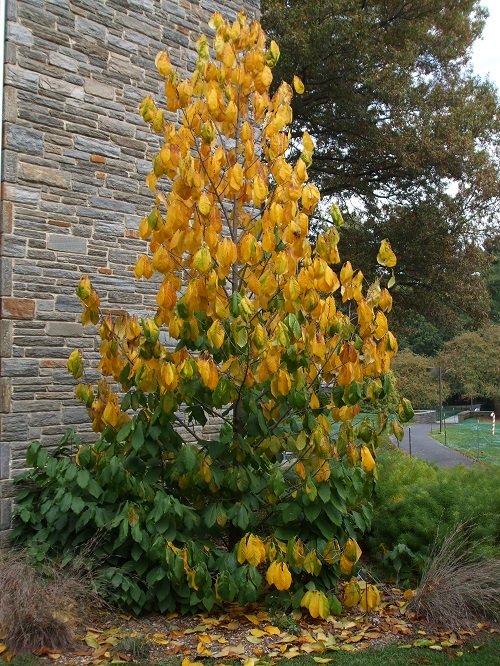
Botanical Name: Asimina triloba
USDA Zones: 5-9
Hidden within northern Georgia’s woodlands, pawpaw trees bear fruit reminiscent of bananas and mangoes. The custard-like texture and tropical taste make them a unique North American delicacy.
Growing Tip: Young trees need shade but require more sunlight as they mature. Fertile, well-draining soil is ideal.
Note: The largest native fruit in North America, it’s also a favorite food of various wildlife.
6. Wild Garlic
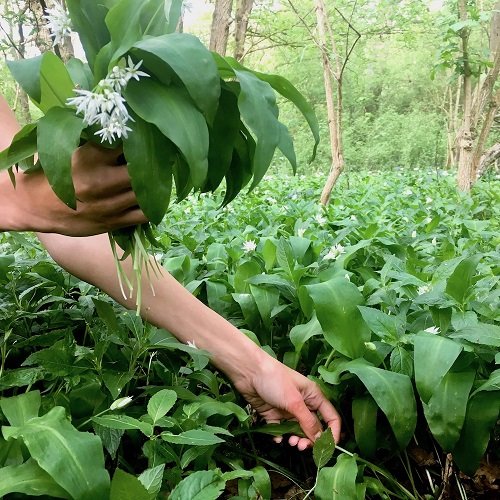
Botanical Name: Allium vineale
USDA Zones: 5-9
Emitting a distinct aroma, wild garlic springs up across Georgia’s meadows and fields. Resembling tall grass, its flavorful bulbs and hollow stems are culinary treasures.
Growing Tip: Sunlit, well-drained patches are its favorite haunts.
Note: A natural accompaniment for soups and meat dishes.
7. Wild Strawberry
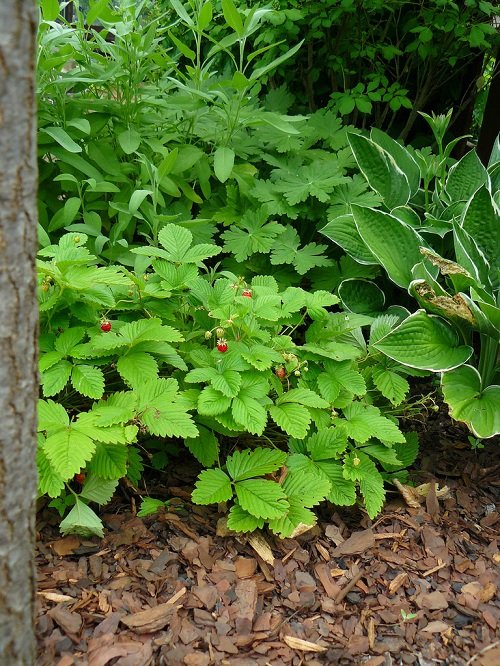
Botanical Name: Fragaria virginiana
USDA Zones: 3-10
Across Georgia’s open fields, wild strawberries sprawl out, bearing sweet, tiny red fruits. Though smaller than garden varieties, they pack an intense, aromatic flavor.
Growing Tip: Sunny to partially shaded spots with rich soil are ideal.
Note: Often used in preserves and desserts.
8. American Persimmon
Botanical Name: Diospyros virginiana
USDA Zones: 4-9
Towering along Georgia’s riverbanks and forests, American persimmon trees are a sight to behold. After the first frost, their once astringent orange fruits mellow into a sweet, pulpy treat.
Growing Tip: Deep, loamy soils with ample spacing nurture these trees.
Note: Native Americans valued them for food and medicine.
Want to give it a try? Here is How to Grow Persimmon
9. Lamb’s Quarters
Botanical Name: Chenopodium album
USDA Zones: 3-9
Thriving in disturbed soils and gardens, lamb’s quarters is a nutritious green often overlooked. Its diamond-shaped leaves and grain-like seeds have nourished humans for millennia.
Growing Tip: Adaptable, but relishes nitrogen-rich soils.
Note: A close relative of quinoa, it’s sometimes called “wild spinach.”
10. Morel Mushrooms

Botanical Name: Morchella spp
USDA Zones: 4-9
North Georgia’s forests, especially near tulip poplars and dead elms, occasionally reveal the prized morel mushrooms. Their honeycomb appearance and rich flavor make them a forager’s delight.
Growing Tip: Morels favor areas of recent tree die-offs or burns.
Note: Proper identification is crucial; look-alikes can be toxic.
11. Violet
Botanical Name: Viola spp
USDA Zones: 3-9
Violets adorn Georgia’s woods and meadows with heart-shaped leaves and vibrant flowers. These blossoms aren’t just a visual treat; they’re edible, offering a sweet to slightly tangy taste.
Growing Tip: They thrive in damp, shaded spots and display drought tolerance once established.
Note: Often used in salads, syrups, and desserts.
12. Chickweed
Botanical Name: Stellaria media
USDA Zones: 3-9
Emerging during Georgia’s cooler months, chickweed carpets lawns and forest underbelly. Its small star-like flowers and tender leaves are both ornamental and edible, reminiscent of corn silk when eaten.
Growing Tip: Prefers cool, damp conditions and spreads quickly.
Note: A traditional remedy for skin conditions.
13. Pokeweed
Botanical Name: Phytolacca americana
USDA Zones: 4-9
Rising tall in open landscapes and forest fringes, pokeweed is a Georgia native. While young shoots are edible when cooked, mature plants and berries can be toxic.
Growing Tip: Adaptable to various soils, but it’s best to manage its spread.
Note: Its deep purple berries have been historically used as dye.
14. Mayapple
Botanical Name: Podophyllum peltatum
USDA Zones: 3-8
Mayapples, with their umbrella-like foliage, are fixtures in North Georgia’s shaded woodlands. Beneath their large leaves, a solitary white flower blooms, eventually forming an edible yellow fruit.
Growing Tip: Favors rich, well-drained soils in shaded areas.
Note: While the fruit is a delicacy, other parts can be toxic.
15. Wild Ginger

Botanical Name: Asarum canadense
USDA Zones: 4-7
Tucked beneath the forest canopy of Georgia, it’s known for its heart-shaped leaves and ginger aroma. The underground rhizomes are particularly aromatic.
Check out Types of Ginger Plants here
Growing Tip: Wild ginger enjoys the moist, rich soil of deciduous forests. It does best in full to partial shade.
Note: Used as a flavoring in Native American cuisine.
Caution: Always ensure proper identification before consuming any wild plant. Some edible plants have dangerous look-alikes. For safety, always refer to a local field guide or consult with an expert. Avoid consuming plants from areas treated with pesticides or herbicides.

